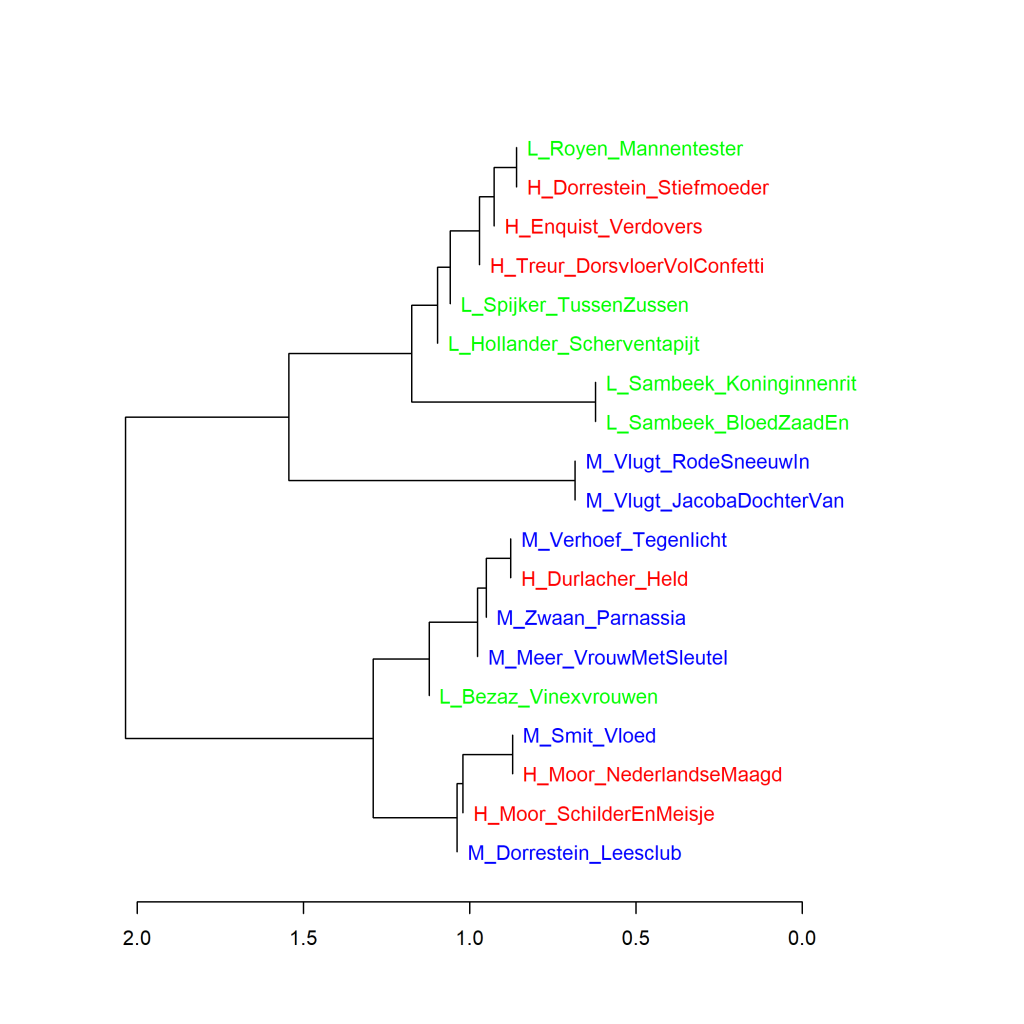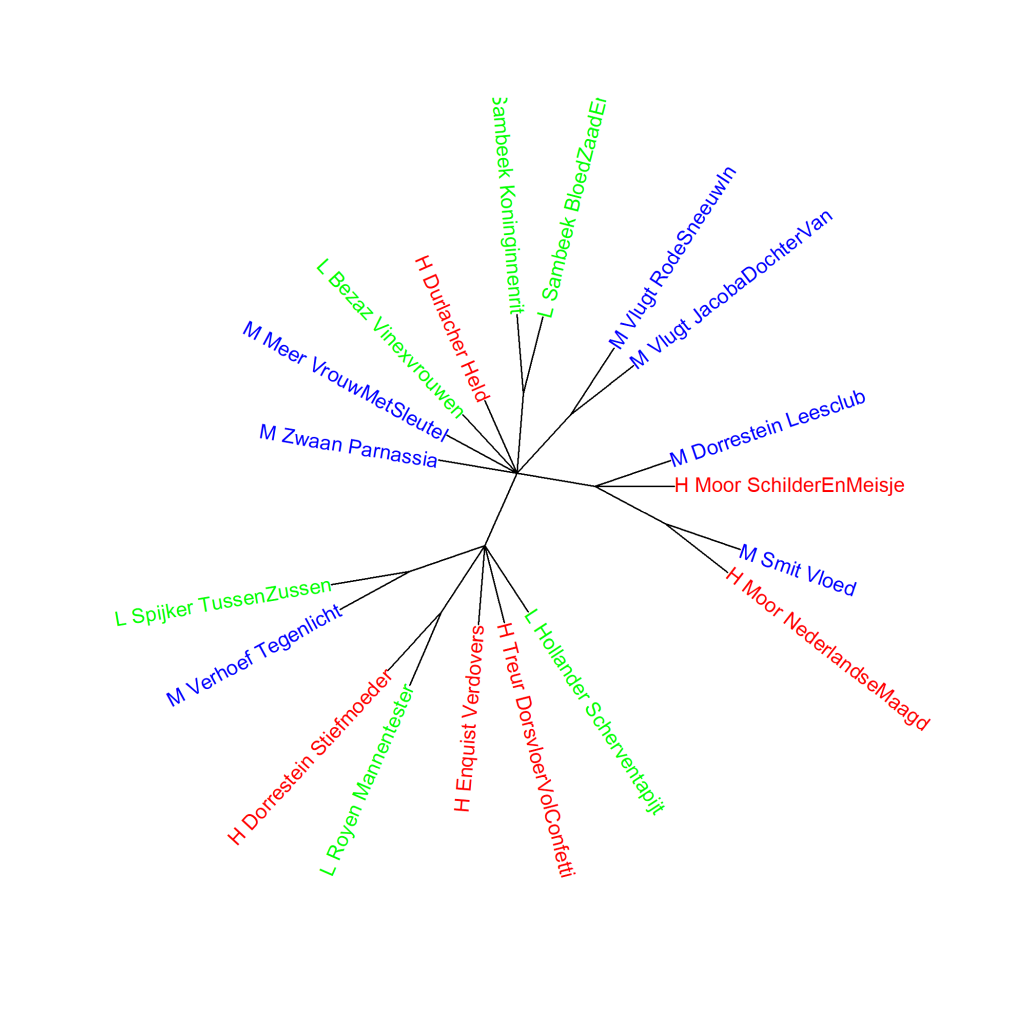Colour version of the graph on p. 115 of The Riddle of Literary Quality.
Dutch Literary novels written by female authors, Cluster Analysis (1000 most frequent words).
Scores for literary quality: H_ (high), L_ (low), and M_ (middle). Measure: Classic Delta.

This graph has also been created using the Stylo Package for R. See Figure 3.1 for more information about the package and the measures.
Figure 4.7 above shows the visualisation of a cluster analysis of the same novels of which Figure 4.6 shows the analysis by main components. Also in the cluster analysis based on the 1000 most frequent words, the groups with different literary quality scores are mixed together. And Renate Dorrestein’s two novels are also in two different clusters here. In the additional graph below (4.7.1), we see that even with a whole series of cluster analyses, that picture does not change.
Figure 4.7.1 Dutch Literary novels written by female authors (2)
Bootstrap consensus tree (100 - 1000 most frequent words, increment 100, consensus strength 0.5). Measure: Classic Delta.

Conclusion
The additional measurements confirm the picture that no clear difference can be found in the word frequencies of Dutch Literary novels by female authors between the novels that received the highest or lowest scores for literary quality or belonged to the middle group. The striking result for Renate Dorrestein’s two novels is described in detail on pp. 115-121 in The Riddle of Literary Quality.